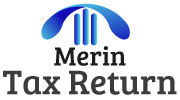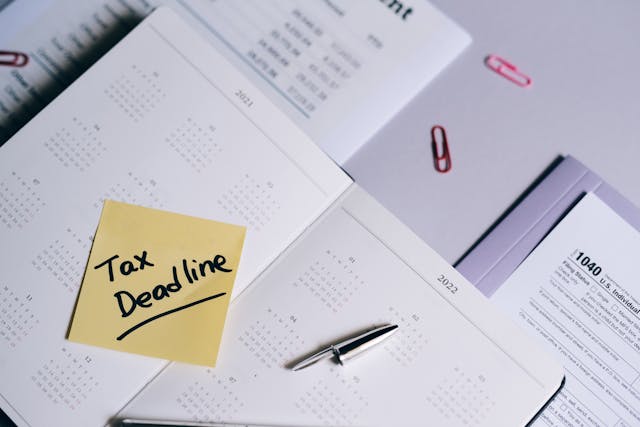When Are Self-Assessment Tax Returns Due? A Comprehensive Guide
Navigating the world of taxes can be daunting, especially when it comes to self-assessment tax returns. Whether you’re self-employed, a freelancer, a landlord, or have other sources of income, understanding when your self-assessment tax return is due is crucial to avoid penalties and stay compliant with HM Revenue and Customs (HMRC) regulations. This comprehensive guide will walk you through everything you need to know about self-assessment tax return deadlines, key dates, and tips to ensure you meet them.
What is a Self-Assessment Tax Return?
A self-assessment tax return is a system used by HMRC to collect Income Tax. It requires individuals to report their income, gains, and other financial information for a specific tax year. The system is designed for those who don’t pay tax through Pay As You Earn (PAYE), such as self-employed individuals, business owners, and those with multiple income streams.
If you fall into any of the following categories, you’ll likely need to file a self-assessment tax return:
- Self-employed individuals earning more than £1,000 in a tax year.
- Directors of limited companies.
- Landlords receiving rental income.
- Individuals with savings, investments, or dividends above certain thresholds.
- Those with income from abroad.
- Anyone who needs to claim tax relief or expenses.
Key Deadlines for Self-Assessment Tax Returns
Missing a self-assessment deadline can result in penalties, so it’s essential to know the key dates. Here’s a breakdown of the deadlines you need to be aware of:
1. Registration Deadline
If you’re filing a self-assessment tax return for the first time, you must register with HMRC. The deadline for registration is October 5th following the end of the tax year. For example, if you need to file a return for the 2024/25 tax year, you must register by October 5, 2025.
2. Paper Tax Return Deadline
If you prefer to submit a paper tax return, the deadline is October 31st following the end of the tax year. For the 2024/25 tax year, this would be October 31, 2026.
3. Online Tax Return Deadline
For most people, the online filing deadline is January 31st following the end of the tax year. For the 2024/25 tax year, this deadline is January 31, 2026. This is also the deadline for paying any tax you owe.
4. Payment Deadline
Any tax you owe for the previous tax year must be paid by January 31st. If you miss this deadline, you’ll incur interest and penalties.
5. Second Payment on Account Deadline
If you make payments on account (advance payments toward your next tax bill), the second installment is due by July 31st. For example, the second payment on account for the 2024/25 tax year is due by July 31, 2026.
Understanding the Tax Year
The UK tax year runs from April 6th to April 5th of the following year. For example, the 2024/25 tax year started on April 6, 2024, and will end on April 5, 2025. Your self-assessment tax return and payments are based on your income and expenses during this period.
What Happens If You Miss a Deadline?
Missing a self-assessment deadline can lead to penalties and interest charges. Here’s what you need to know:
1. Late Filing Penalties
- 1 day late: £100 penalty, even if you have no tax to pay.
- 3 months late: Additional £10 per day, up to a maximum of £900.
- 6 months late: The greater of £300 or 5% of the tax due.
- 12 months late: Another £300 or 5% of the tax due.
2. Late Payment Penalties
- 30 days late: 5% of the tax owed.
- 6 months late: Additional 5% of the tax owed.
- 12 months late: Another 5% of the tax owed.
3. Interest Charges
HMRC will also charge interest on any unpaid tax from the due date until the payment is made.
Tips for Meeting Self-Assessment Deadlines
To avoid penalties and stress, follow these tips to ensure you meet your self-assessment deadlines:
1. Register Early
If you’re new to self-assessment, register with HMRC as soon as possible. This will give you ample time to gather the necessary documents and information.
2. Keep Accurate Records
Maintain organized records of your income, expenses, and receipts throughout the year. This will make it easier to complete your tax return and reduce the risk of errors.
3. Use Accounting Software
Consider using accounting software like QuickBooks, Xero, or FreeAgent to track your finances and generate reports. Many of these tools integrate with HMRC’s systems, making it easier to file your return.
4. Set Reminders
Mark key deadlines on your calendar or set reminders on your phone. This will help you stay on top of your obligations.
5. Seek Professional Help
If you’re unsure about how to complete your tax return or have complex financial affairs, consider hiring an accountant or tax advisor. They can ensure your return is accurate and help you claim all allowable deductions.
How to File Your Self-Assessment Tax Return
Filing your self-assessment tax return can be done online or by post. Here’s a step-by-step guide:
1. Gather Your Documents
Before you start, collect all the necessary documents, including:
- P60 or P45 forms.
- Bank statements.
- Invoices and receipts.
- Records of expenses.
- Details of any other income (e.g., rental income, dividends).
2. Log in to Your HMRC Account
Visit the HMRC website and log in to your self-assessment account using your Unique Taxpayer Reference (UTR) and password.
3. Complete the Form
Fill in the relevant sections of the tax return, including details of your income, expenses, and any allowances or reliefs you’re claiming.
4. Review and Submit
Double-check your entries for accuracy, then submit your return. You’ll receive a confirmation once it’s been successfully filed.
5. Make Your Payment
If you owe tax, make sure to pay it by the January 31st deadline. You can pay online, by bank transfer, or through other methods accepted by HMRC.
Common Mistakes to Avoid
When filing your self-assessment tax return, watch out for these common mistakes:
- Missing the Deadline: Late filing can result in penalties.
- Incorrect Figures: Double-check all numbers to avoid errors.
- Omitting Income: Ensure you report all sources of income, including side hustles and overseas earnings.
- Not Claiming Allowable Expenses: Take advantage of all deductions you’re entitled to.
- Forgetting to Sign and Date: If submitting a paper return, don’t forget to sign and date it.
What Happens After You File?
Once you’ve submitted your tax return, HMRC will process it and send you a tax calculation (known as a SA302). This document shows how much tax you owe or are due to be refunded. If you’ve overpaid, HMRC will issue a refund. If you owe tax, make sure to pay it by the deadline to avoid penalties.
Planning for the Next Tax Year
Filing your self-assessment tax return is an annual obligation, so it’s a good idea to start planning for the next tax year as soon as the current one ends. Here are some steps to take:
- Review Your Finances: Assess your income and expenses to identify areas for improvement.
- Set Aside Money for Tax: If you’re self-employed, consider setting aside a portion of your income to cover your tax bill.
- Stay Organized: Keep your records up to date throughout the year to make next year’s tax return easier.
Conclusion
Filing a self-assessment tax return doesn’t have to be stressful if you understand the deadlines and plan ahead. By registering on time, keeping accurate records, and seeking professional help when needed, you can ensure a smooth and penalty-free experience. Remember, the key deadlines are:
- October 5th: Register for self-assessment.
- October 31st: Paper tax return deadline.
- January 31st: Online tax return and payment deadline.
- July 31st: Second payment on account deadline.
Stay organized, meet your deadlines, and take advantage of all allowable deductions to minimize your tax liability. With the right approach, you can navigate the self-assessment process with confidence and ease.
This guide provides a comprehensive overview of self-assessment tax return deadlines and tips to help you stay compliant. If you have any specific questions or need further assistance, don’t hesitate to consult HMRC’s official website or seek advice from a qualified tax professional.

